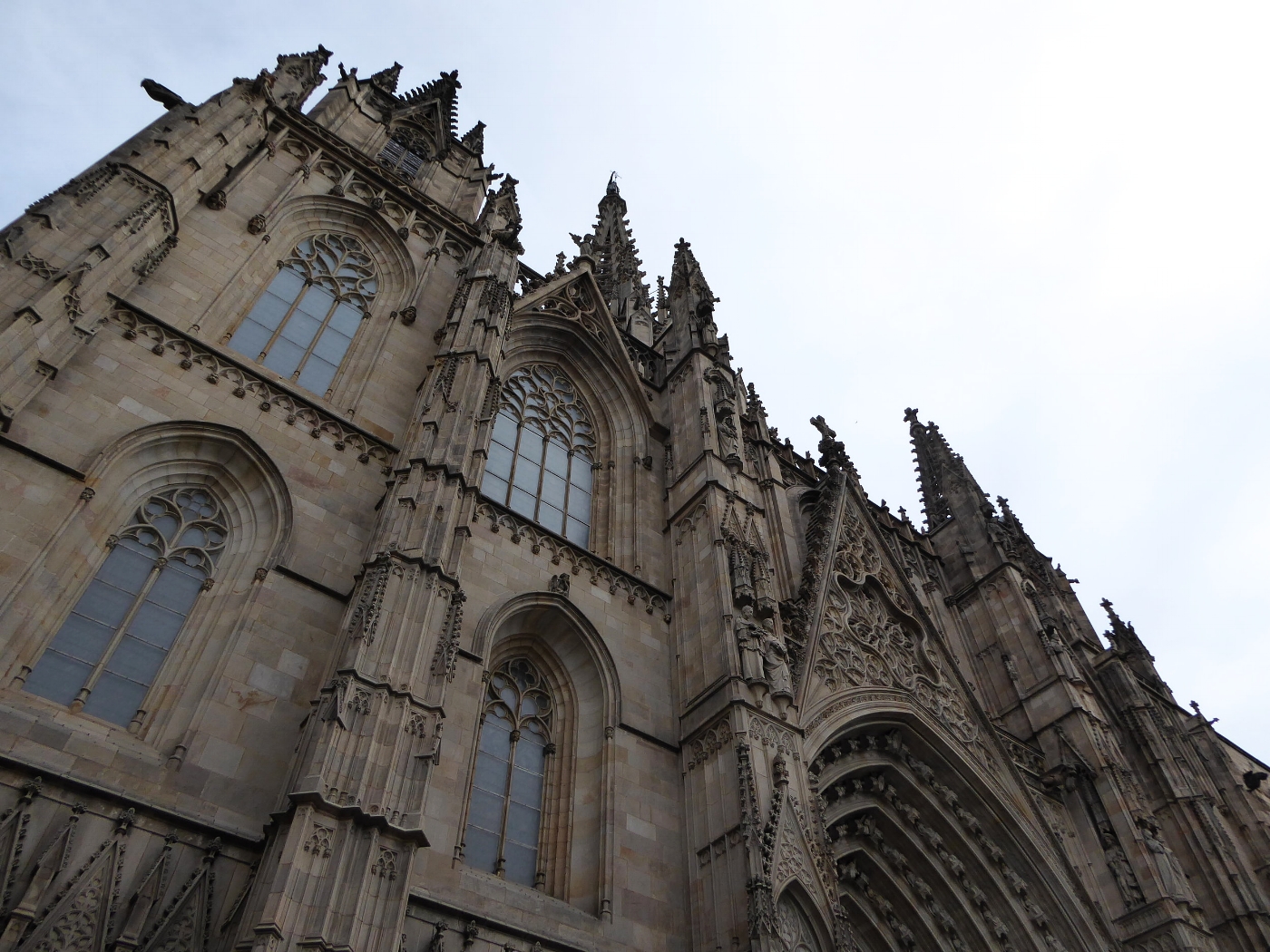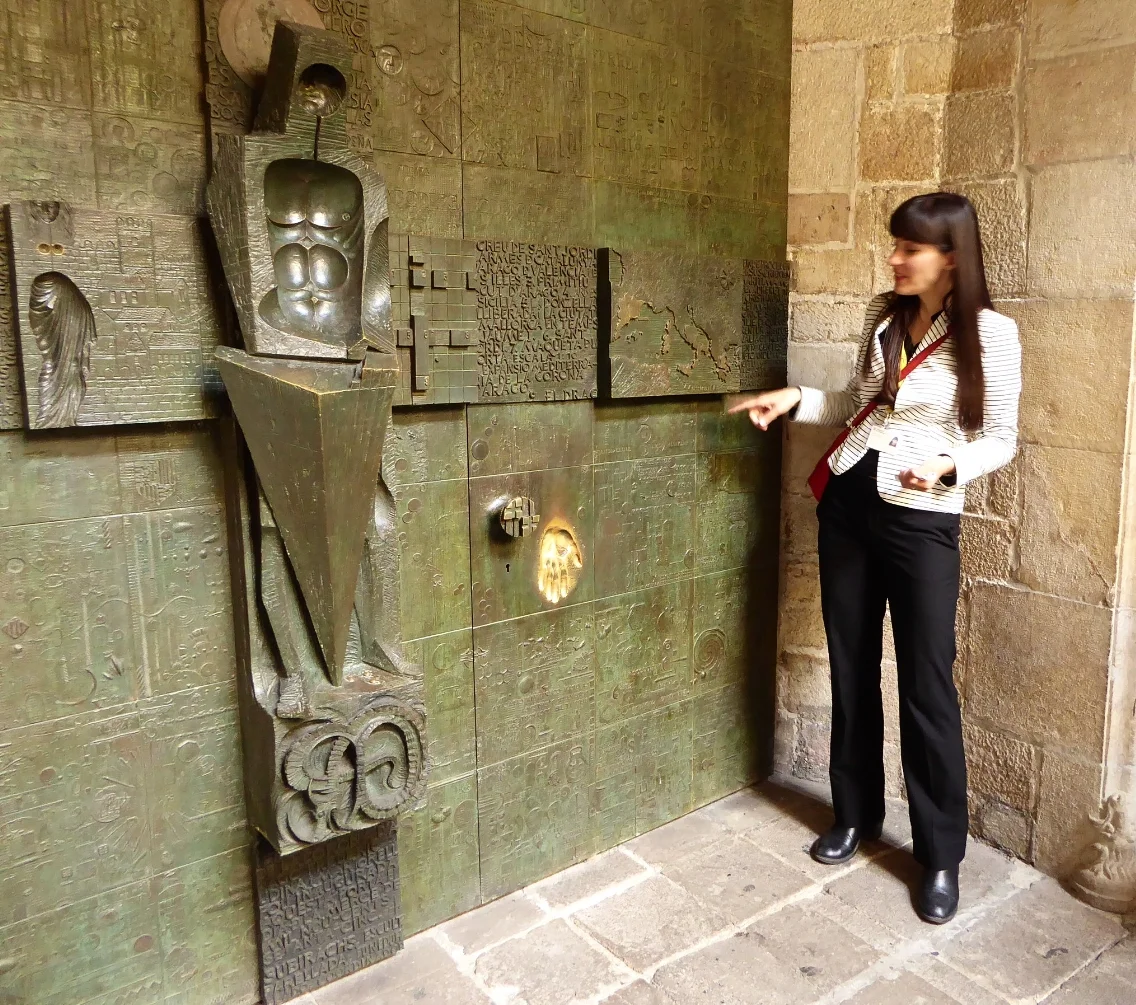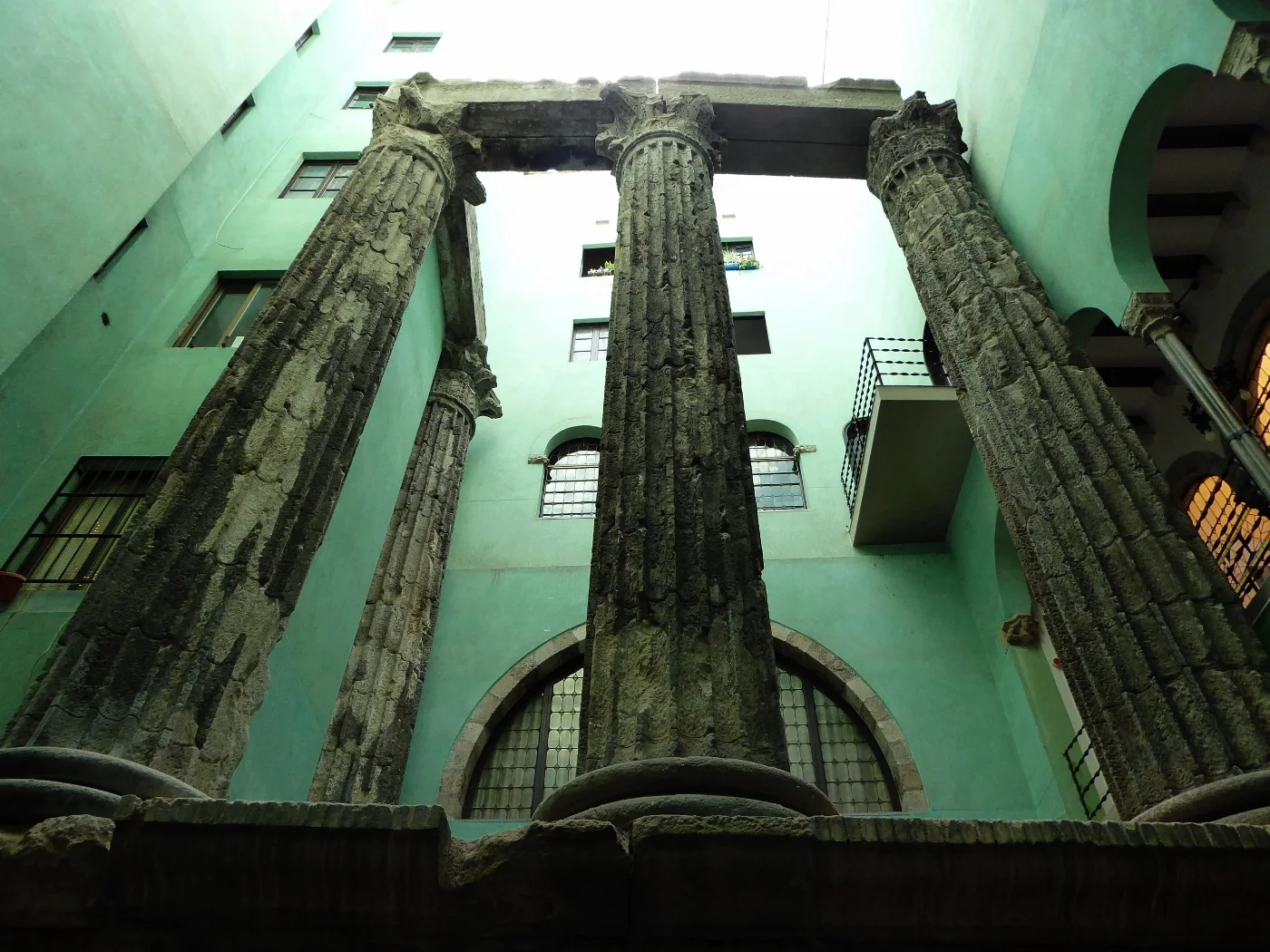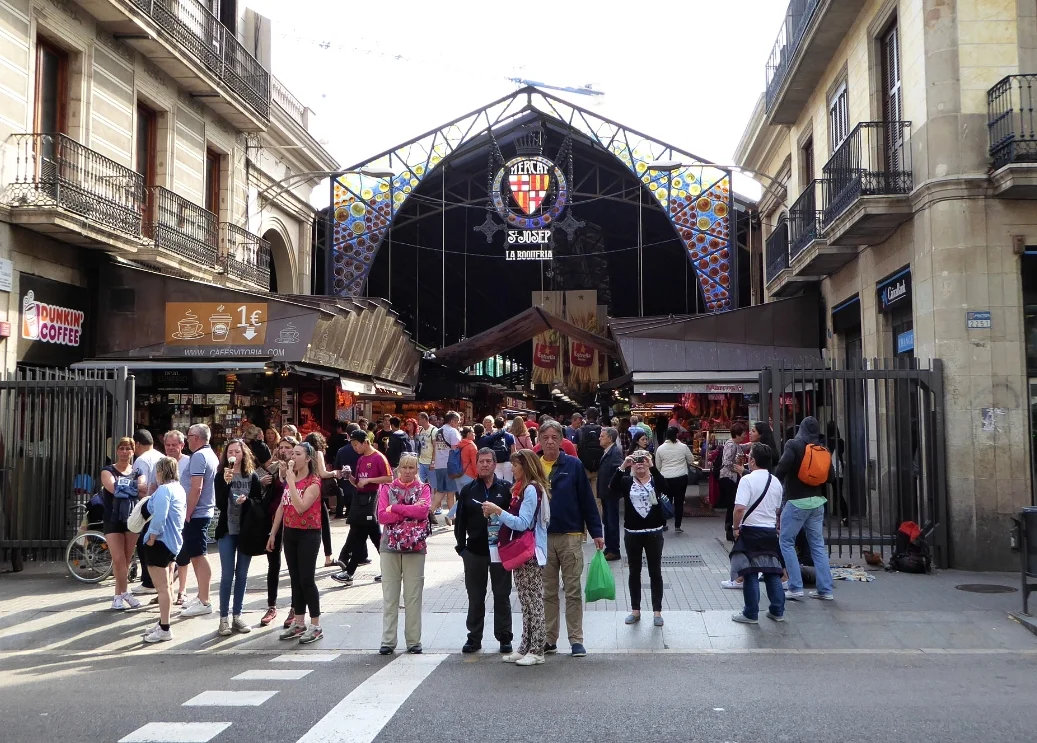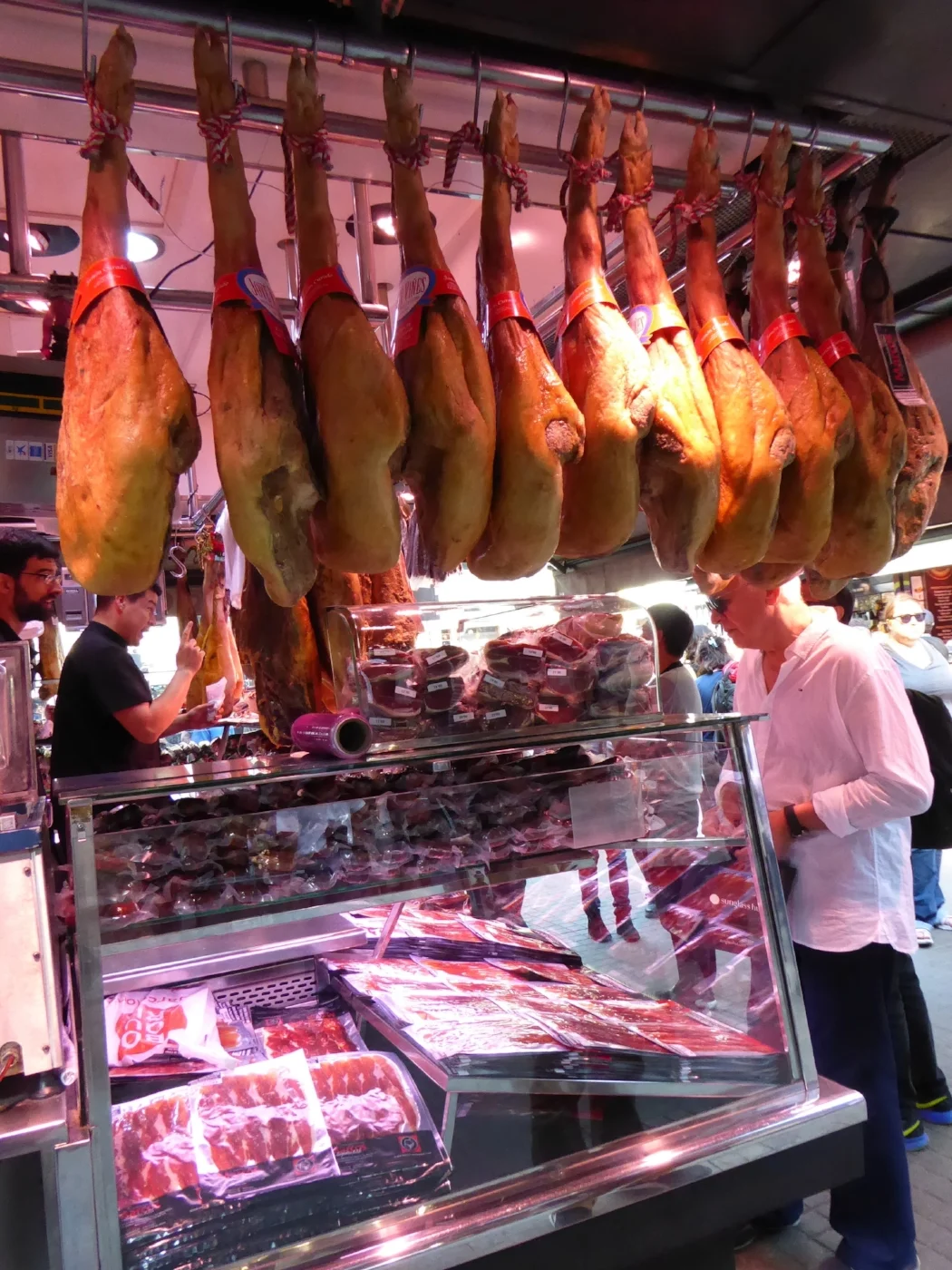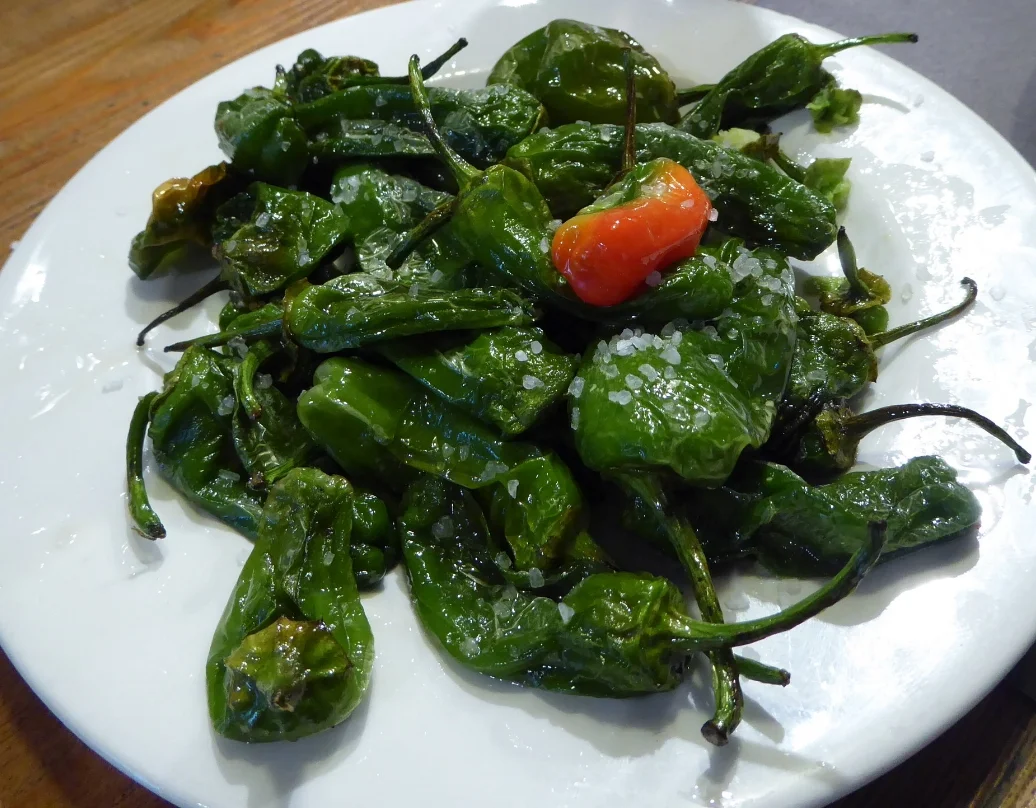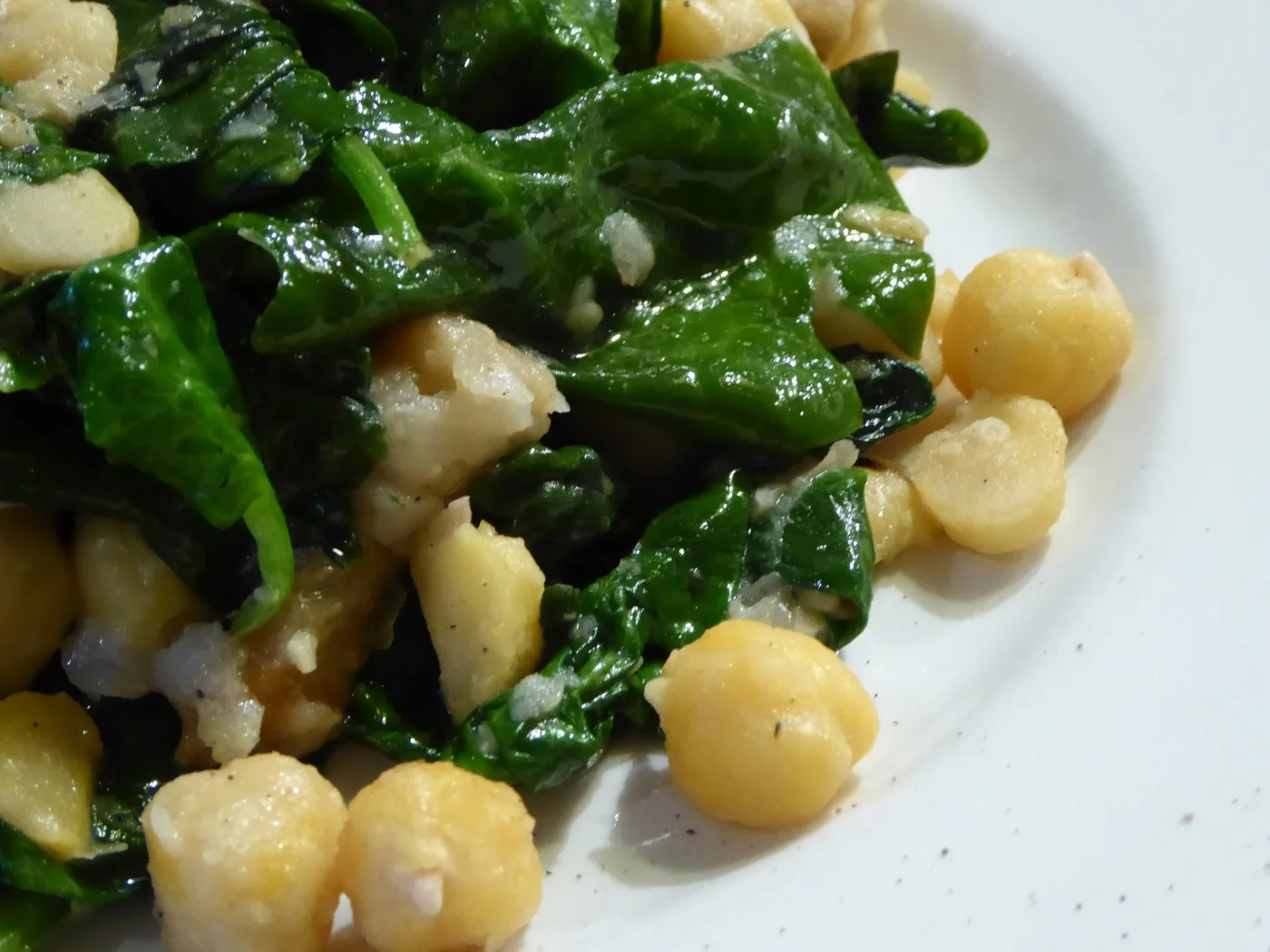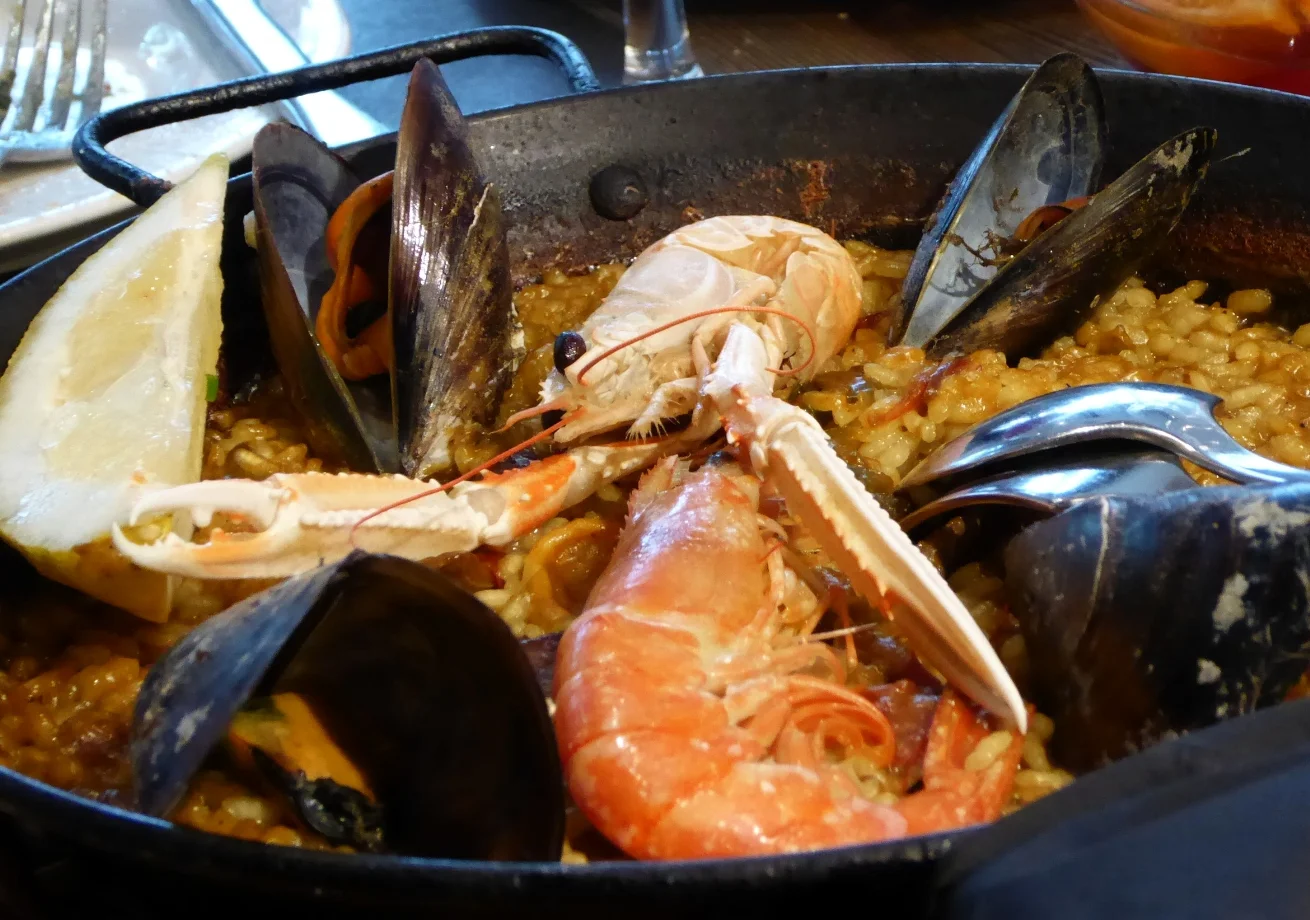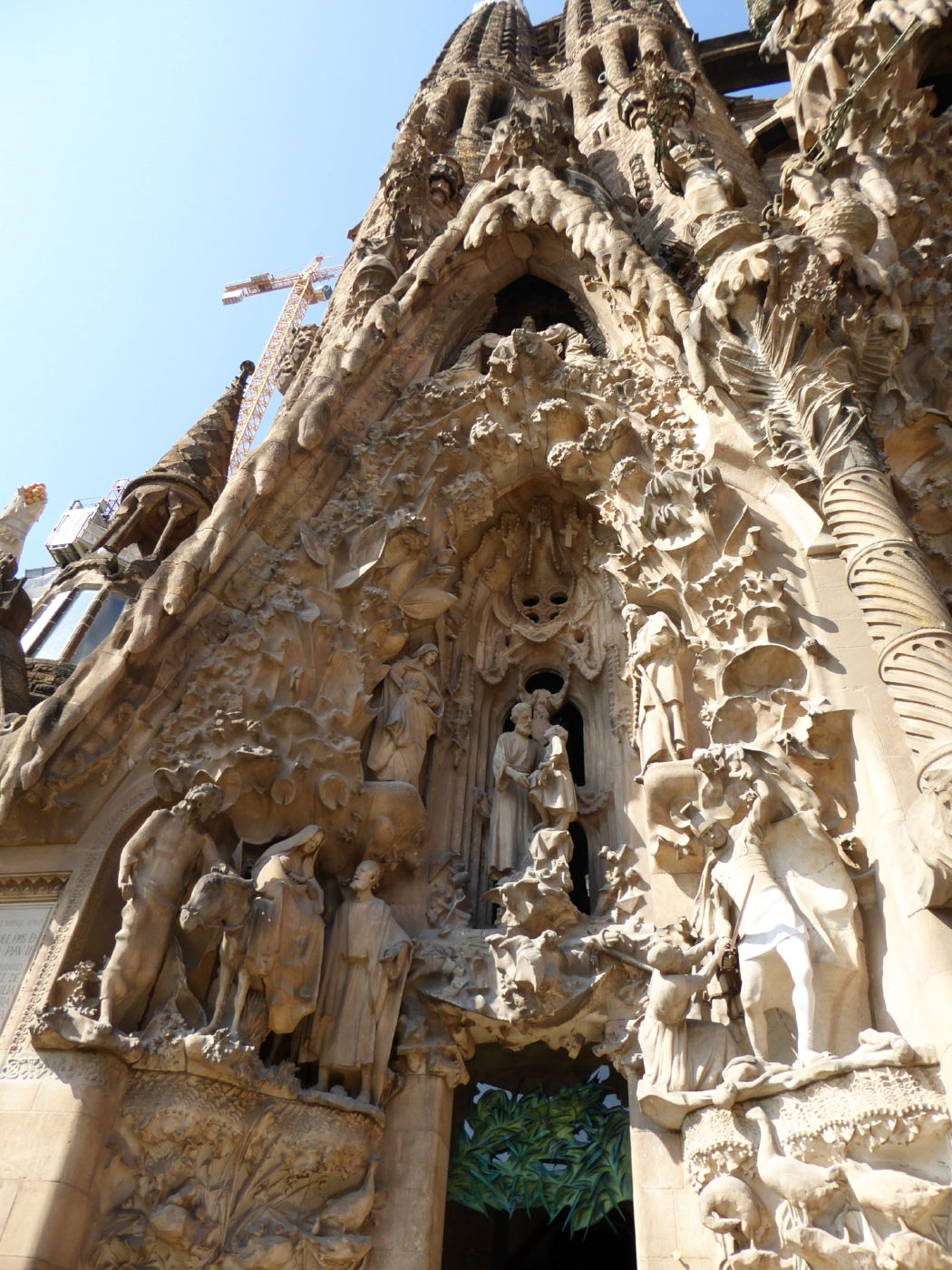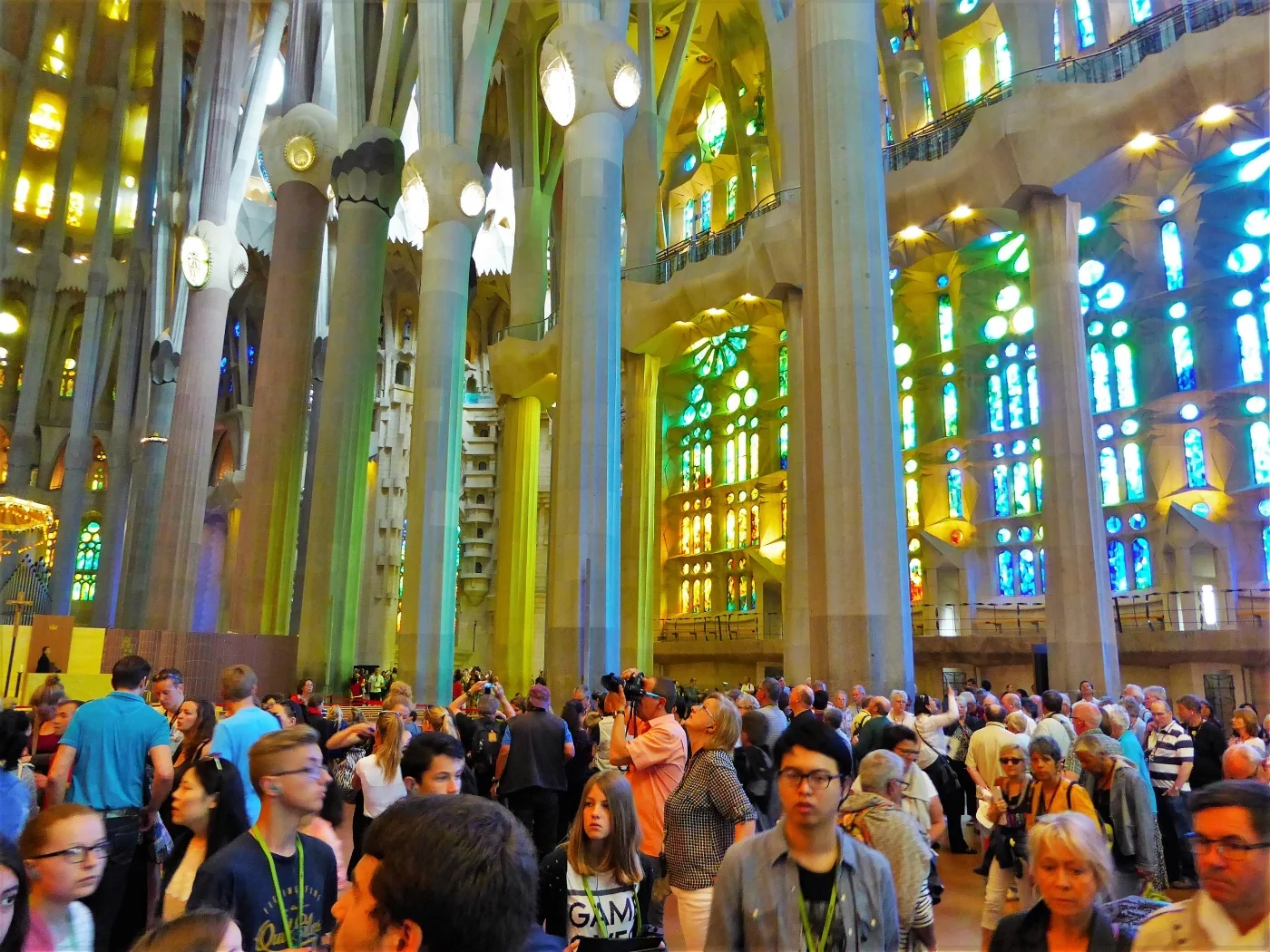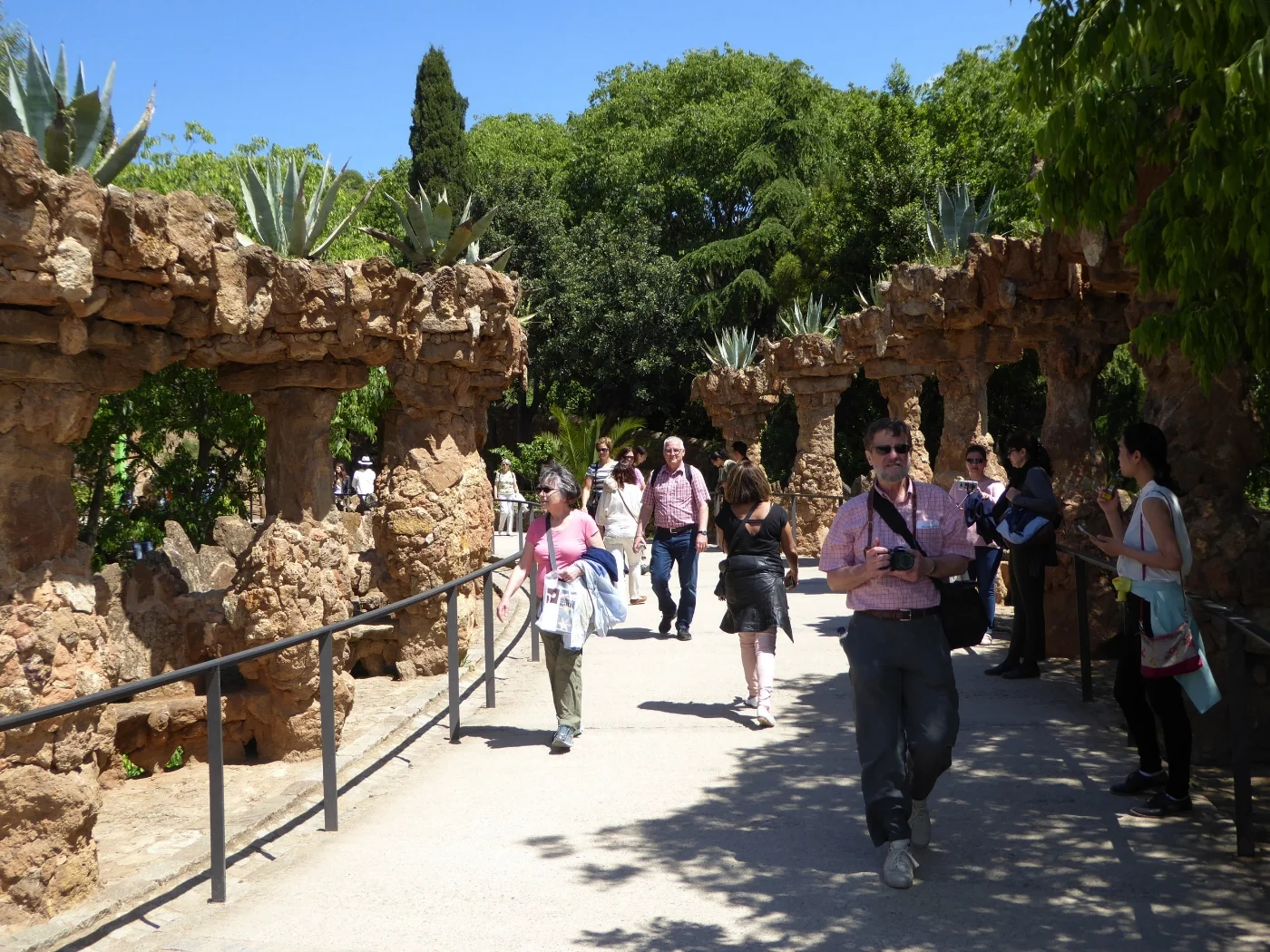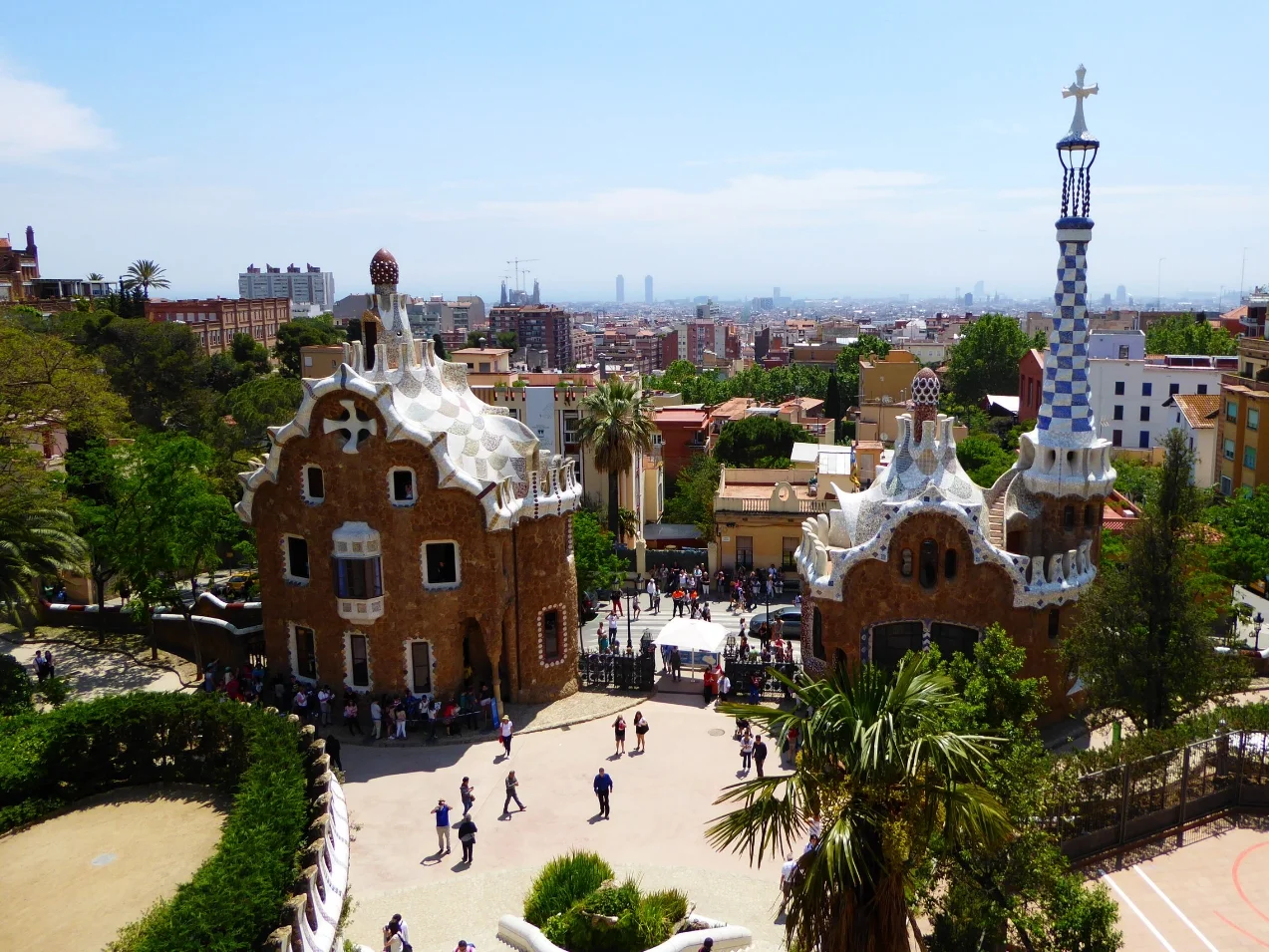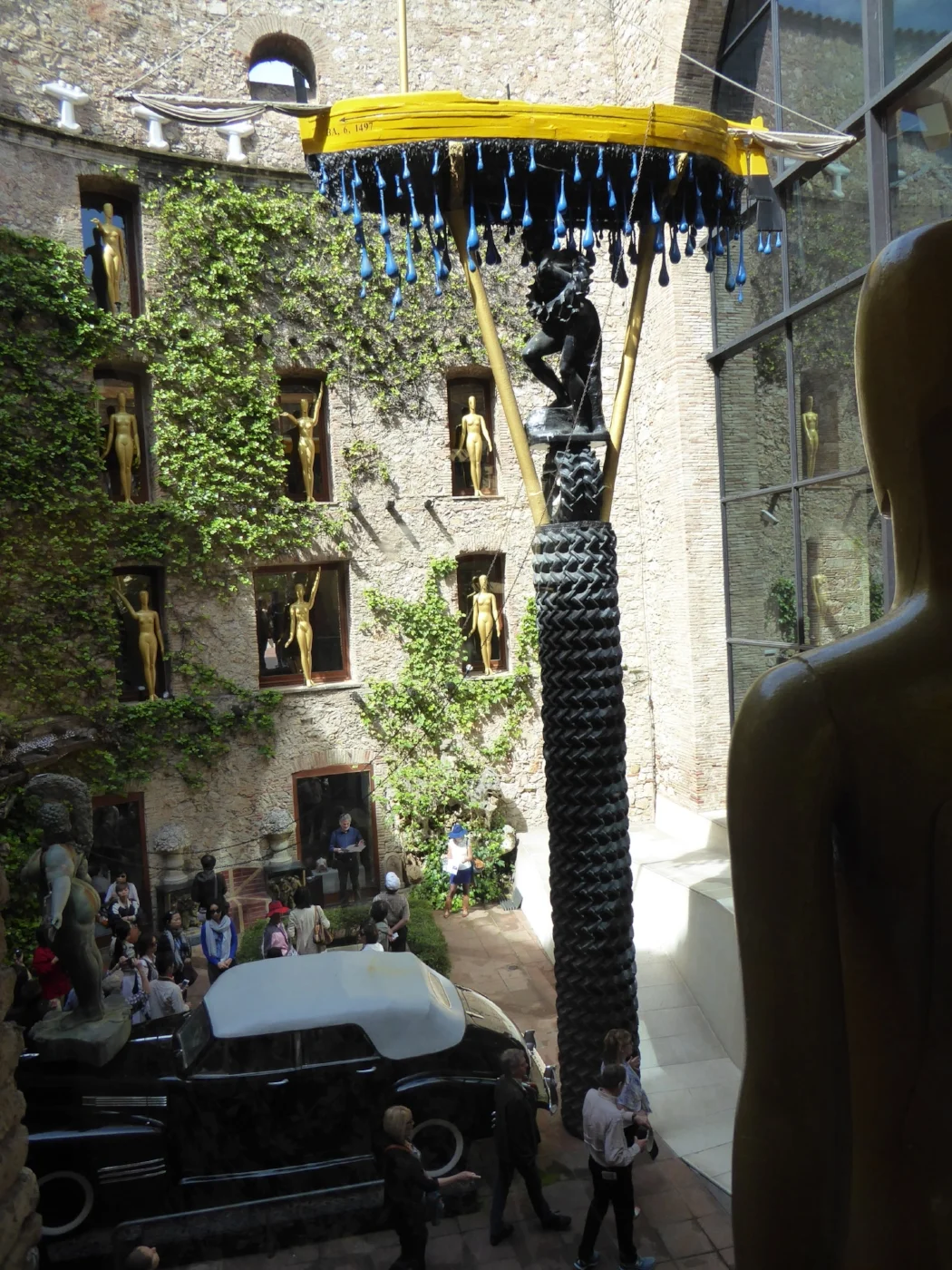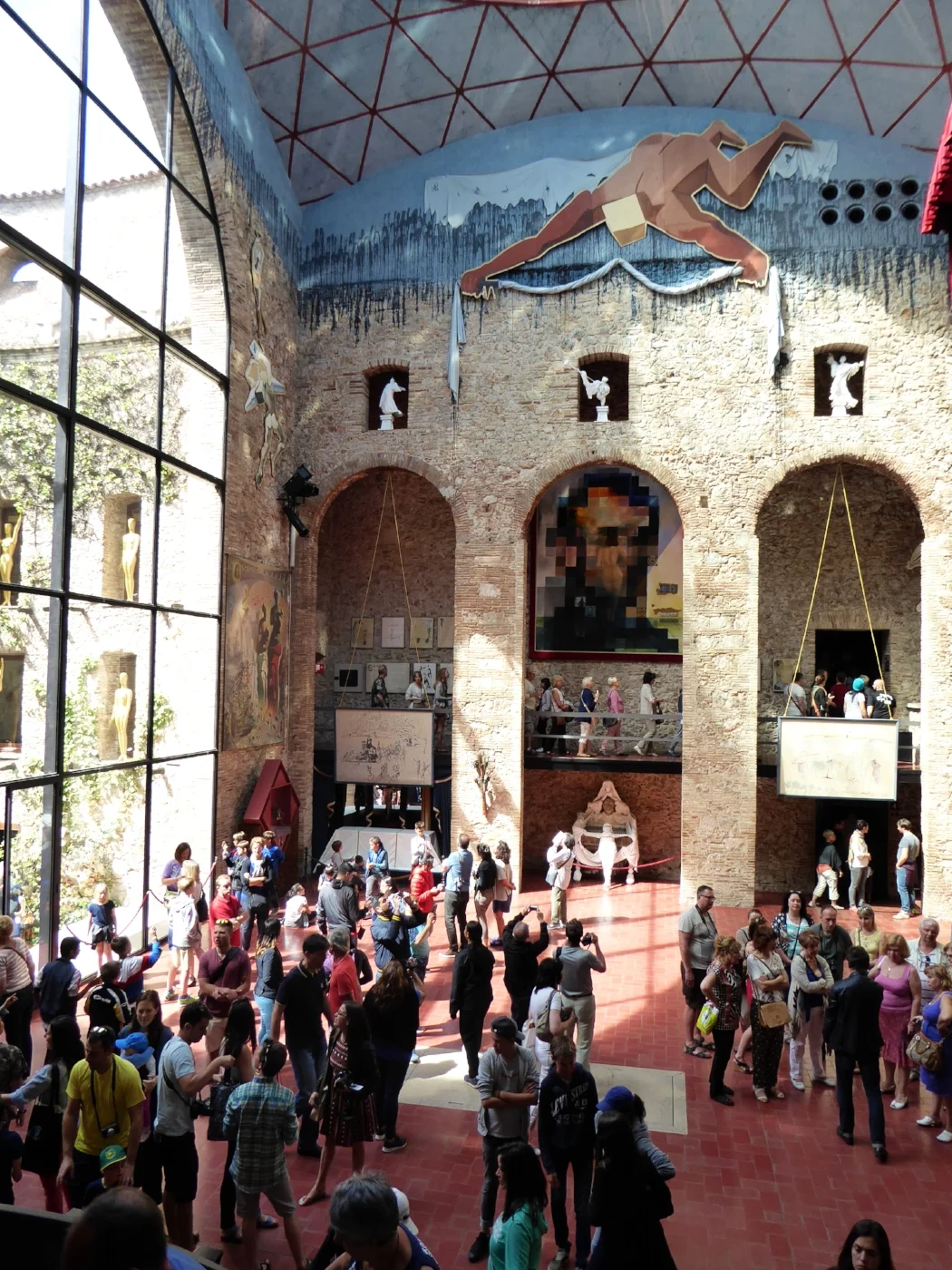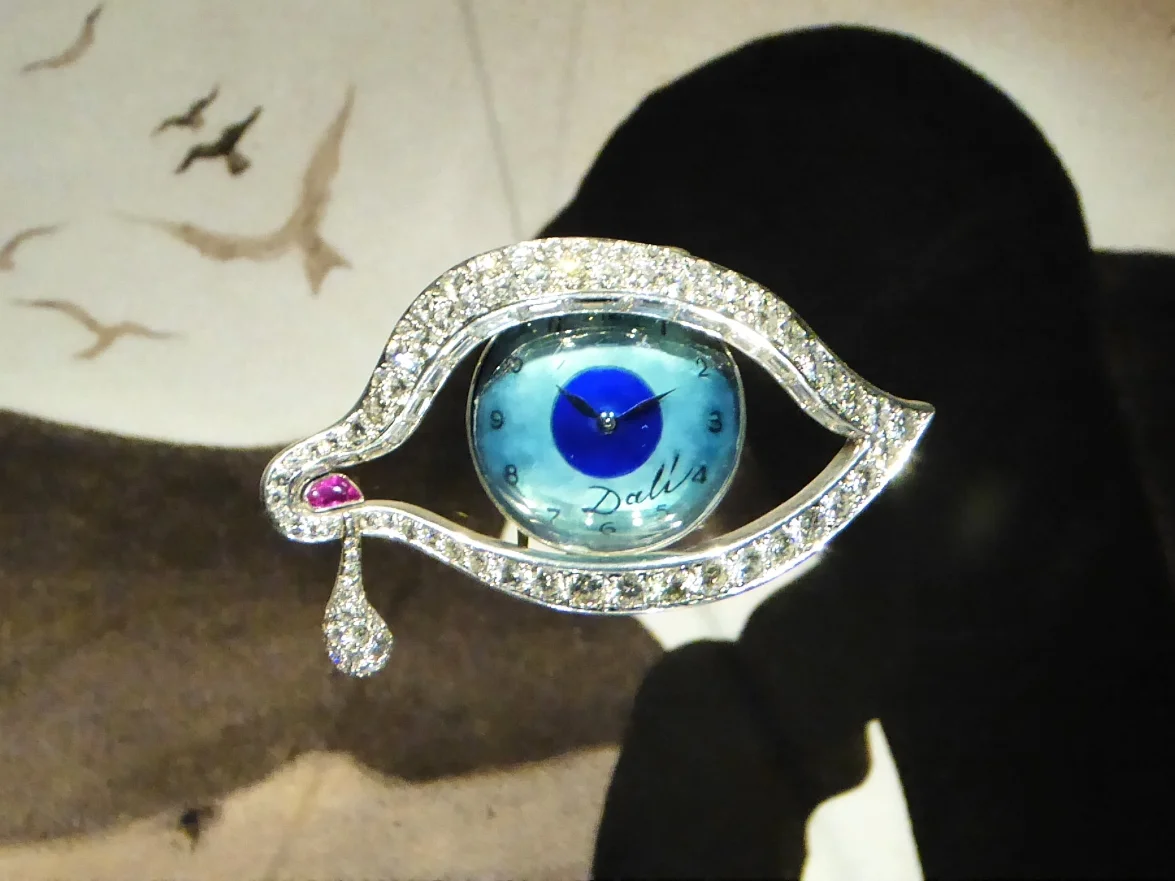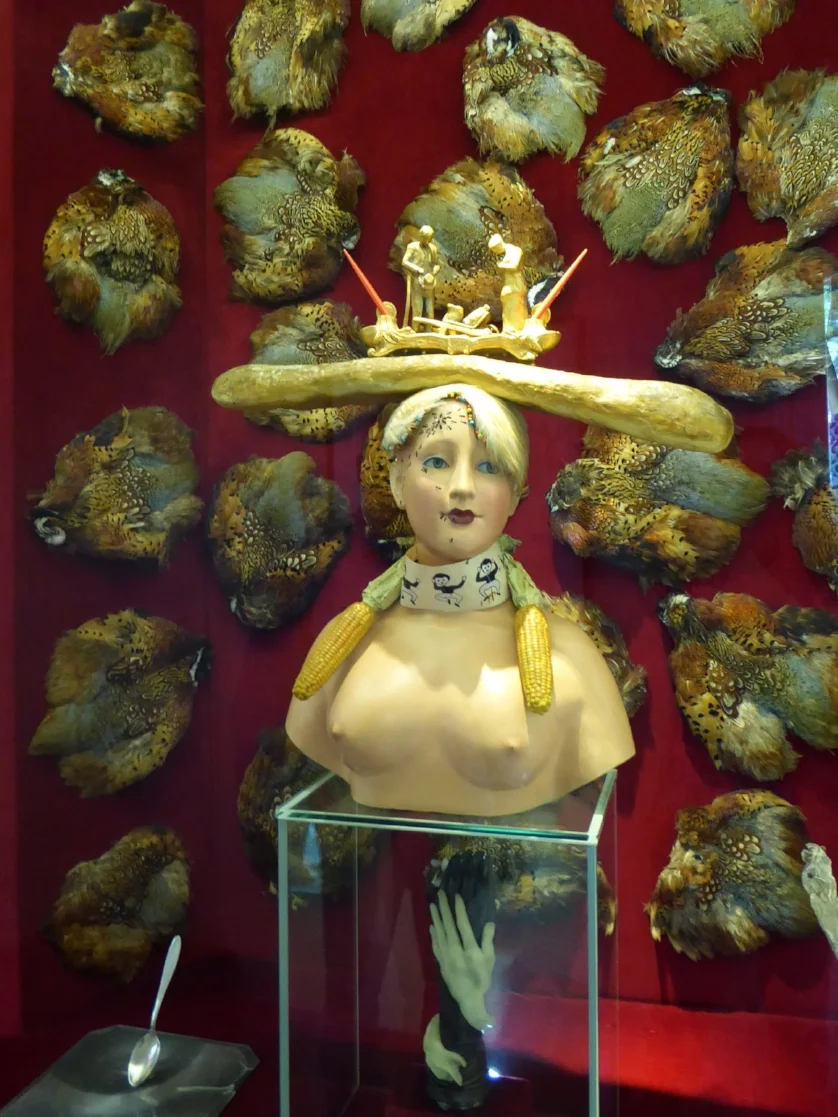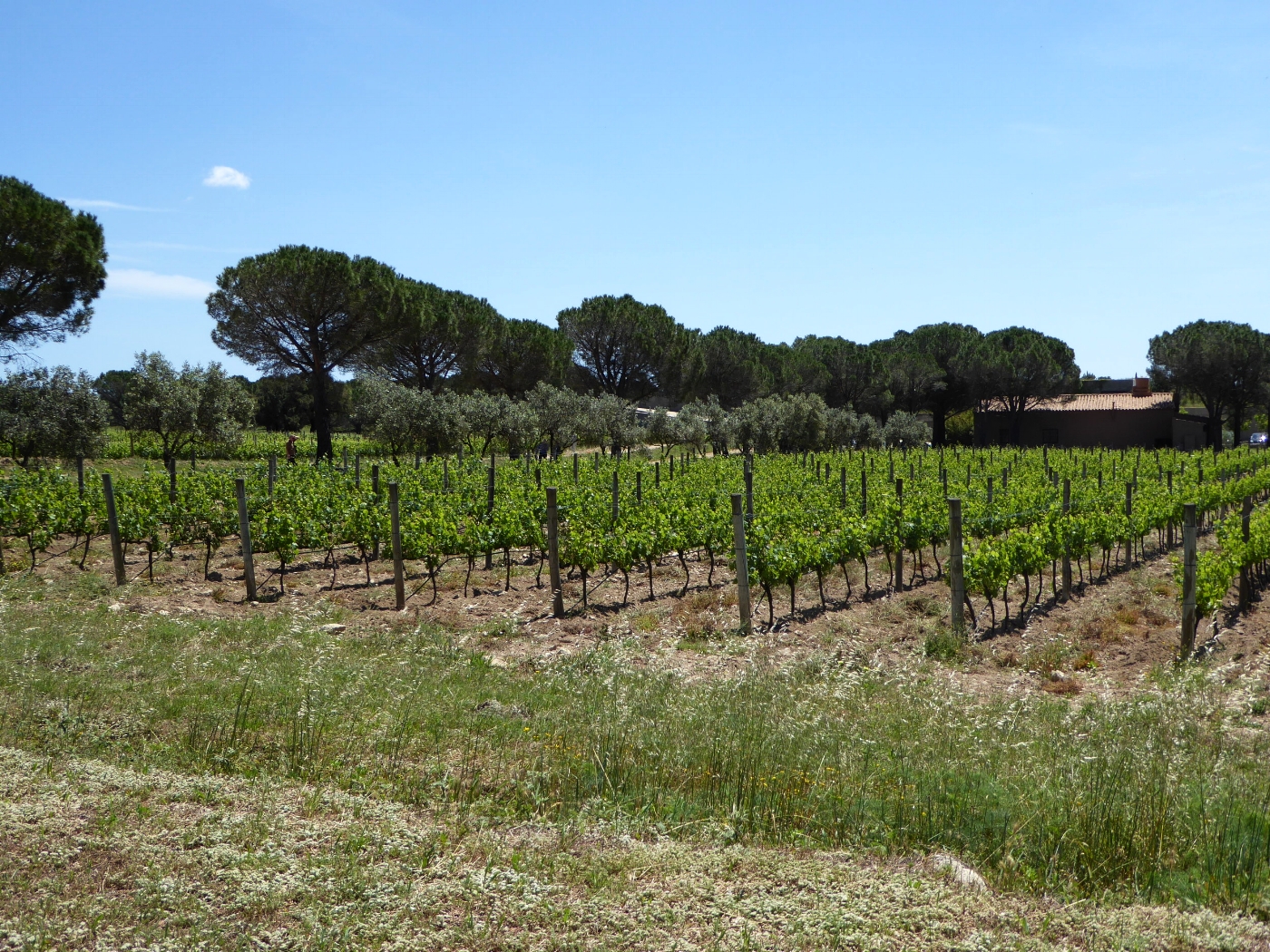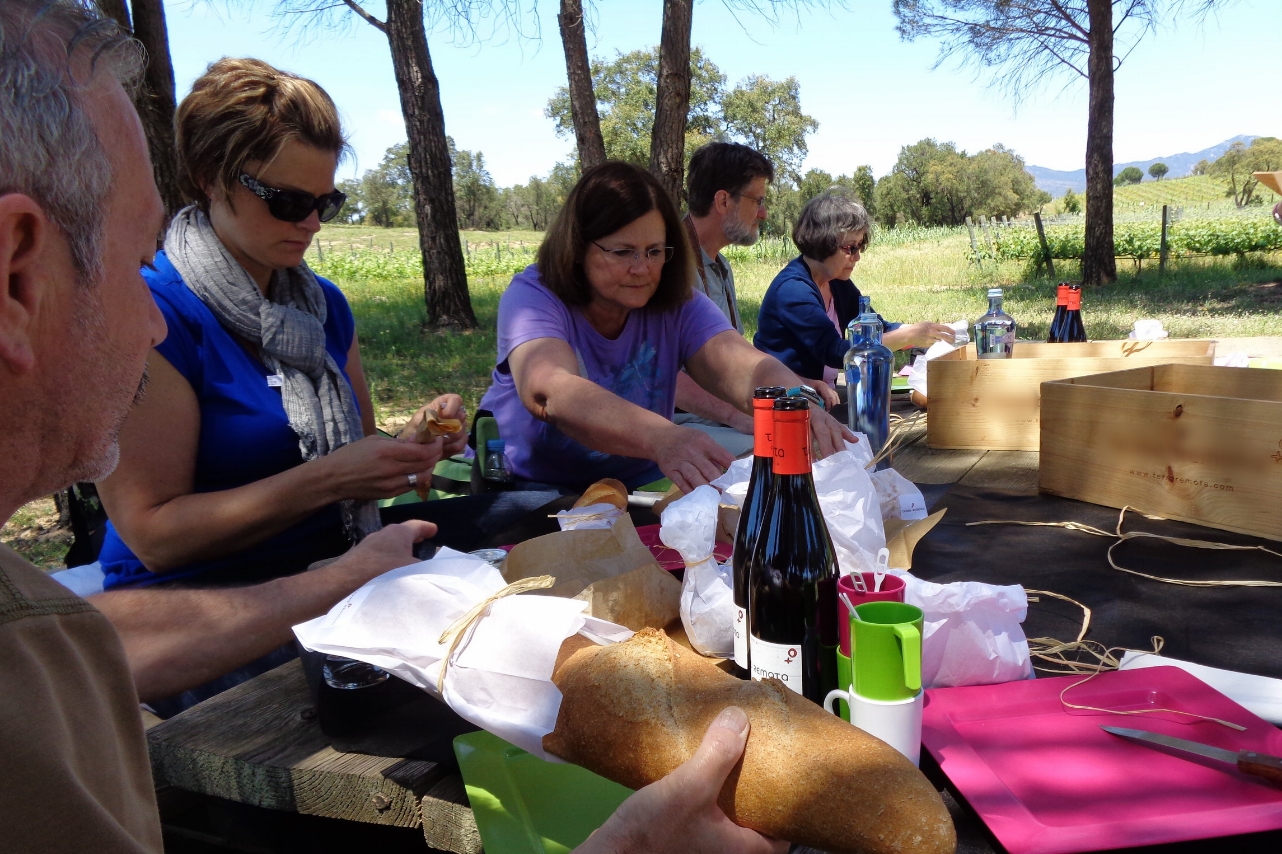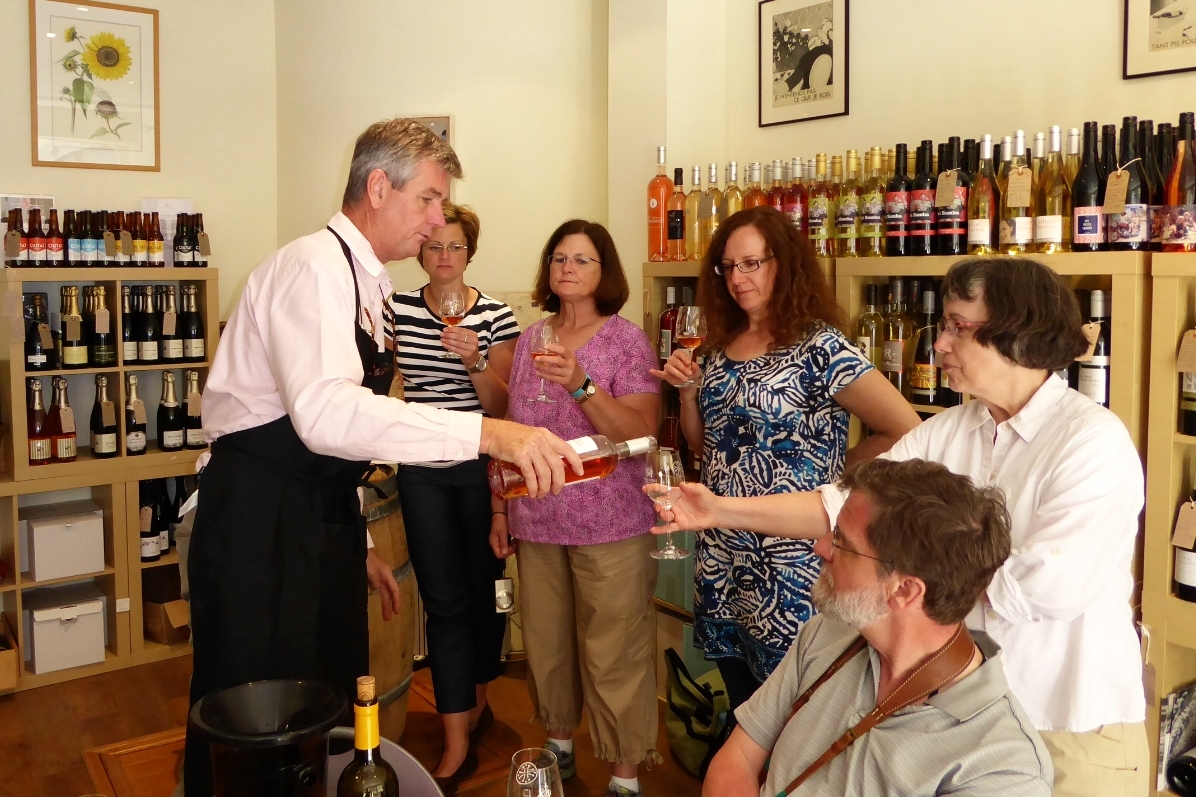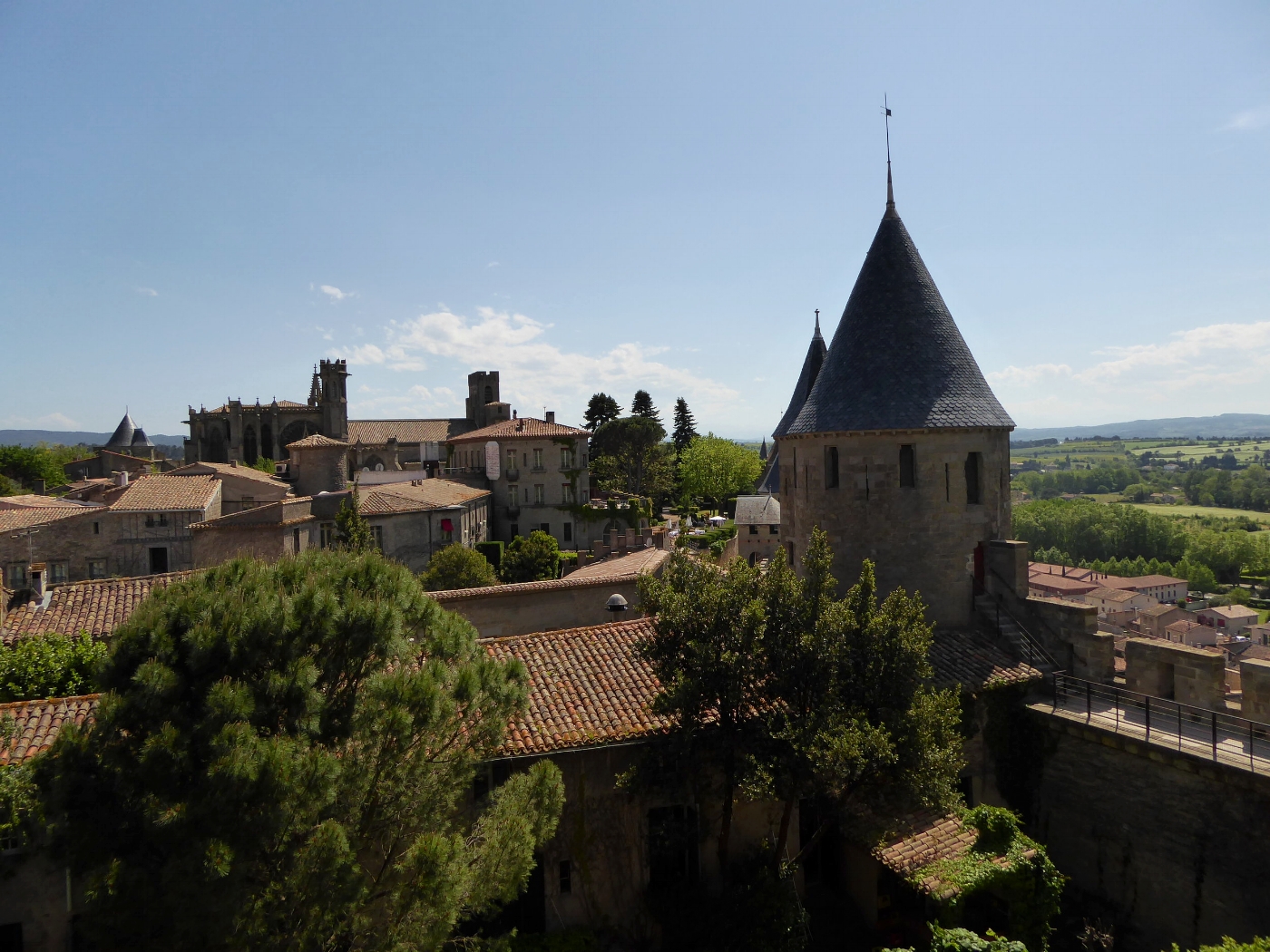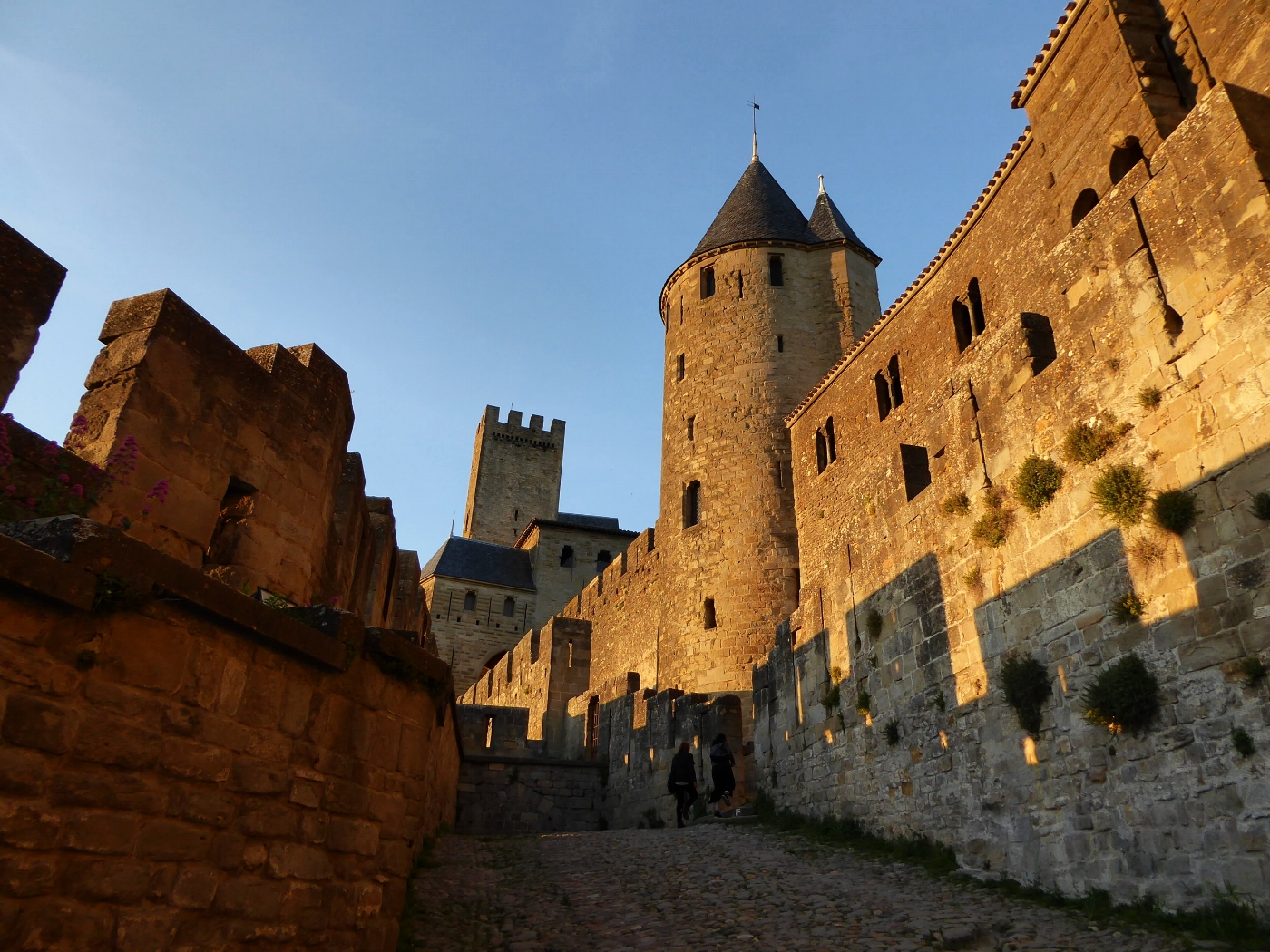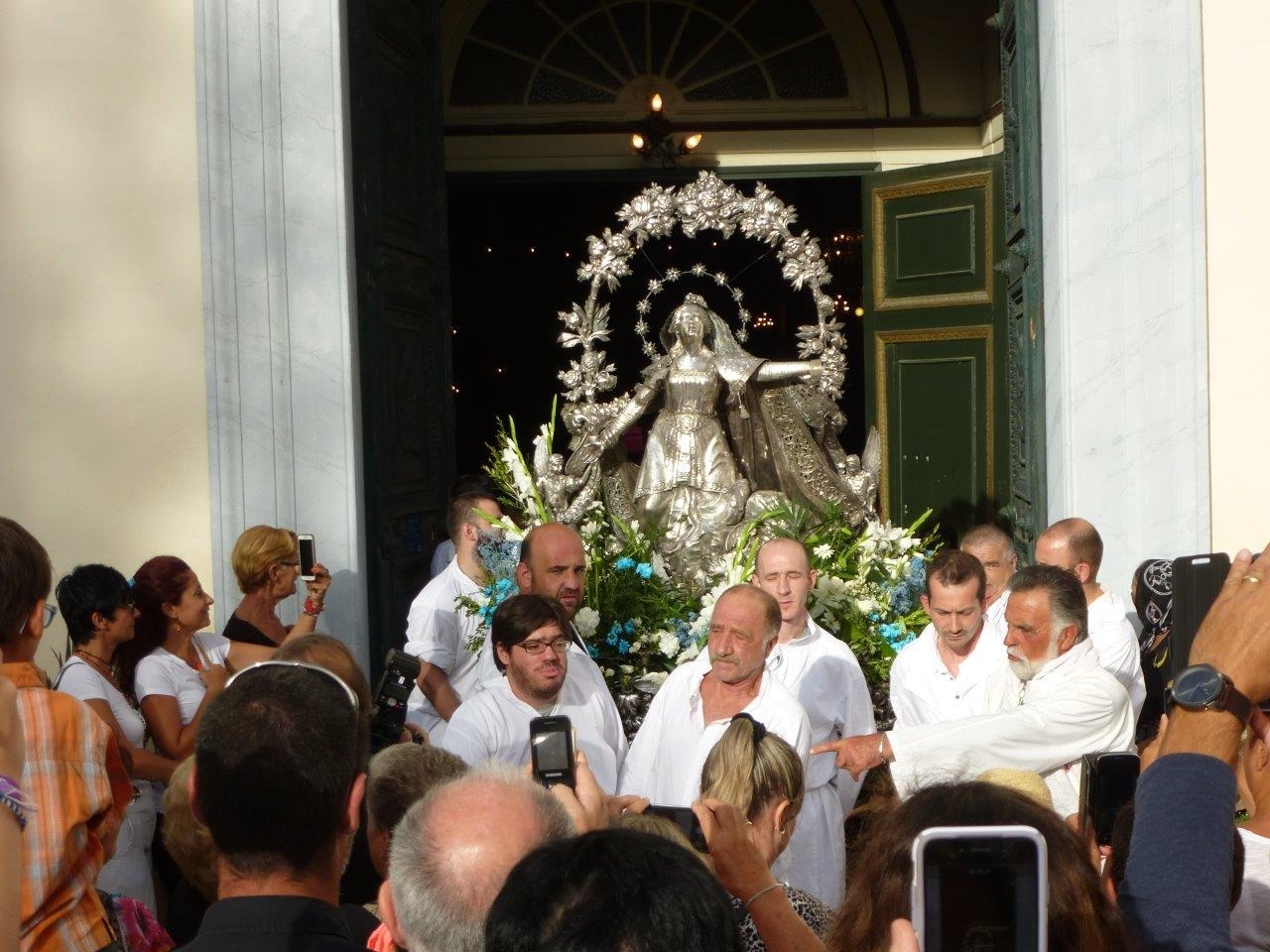This and the next few blogs are a narration of our group's experiences this past May. It is a work in progress and will be published at intervals, so tune in to read this account and get a good glimpse of the ins and outs of my guided tours.
Barcelona: In front of the Magic Fountain and the Catalan Museum of Archaeology, Montjuic.
The inception of GWF's 2016 Spain & Southwestern France Guided Tour came about several years ago. The tour waited on a list of exciting itineraries I plan on undertaking in the next decade. So many countries, so many cities and villages to explore, one more beautiful and unique than the other...So many dishes and wines to savor!
Spain & SW France Travel Blog - Part I
This was our first tour to Spain and Southwestern France, even though we have been to France at least 10 times since we started traveling with groups.
Our Itinerary:
To keep our travel time down to two weeks, the itinerary started in Barcelona; we worked our way up through wine country of the Catalunya region (Northeast), then crossed over into France. There, we visited world-renowned Carcassonne: A quintessential medieval walled citadel on a hill, overlooking the Aude river and its lower town. We continued to Roquefort-sur-Soulzon, village whose name is on every piece of Roquefort cheese around the world. We crossed the Aveyron and Lot departments to spend a couple of days in Conques, one of the main pilgrimage stops on the Way of St James of Compostela (le chemin de St-Jacques de Compostelle). Heading west towards the Atlantic coast, we followed the Dordogne river which gives its famous name to this area speckled with extraordinary villages, and visited Rocamadour as well as the prehistoric cave reproductions of Lascaux II. St Emilion village and its wineries welcomed us for two days in which we canvassed the picturesque and elegant village, and toured two different wine domains-châteaux: A small family operation and a large château with a grand export operation. Our group's last destination was the nearby city of Bordeaux, known for centuries, if not millennia, for its classy and classic wines.
Note: You can also find the shortened itinerary under Itinerary/Guided Tours. Scroll all the way down to find it and to view a few more photos.
Barcelona: Inside Parc Guell, in front of Gaudi's Museum-House
Our Group:
Our group included 6 of our faithful travelers, then my husband (as he says: “Cristina's best client”), and myself as guide/escort. Four out of six of our participants had traveled on our very first adult tour in 2008, back when I was a teacher and had travel arrangements done through another company. Our other two travelers were inaugurating their 3rd trip with us since 2012. I feel blessed and honored that our travelers-turned-friends enjoy our itineraries and travel style so much as to join us on almost every one of my adult tours. Thank you, friends!
This being one of our smaller groups and with experienced travelers, I could build more flexibility and free exploration into the tour to allow for more personal preferences in activities and restoration.
Barcelona:
Our tour began at a majestic hotel just a 5-minute walk from La Rambla. This hotel is a historic palace which was Lady Dorotea de Chipotea's home (since 1870) and has been used as a set for a number of movies and TV series.
Our group began its activities with a walking tour of Barri Gótic led by our historian Tanya. We meandered through the narrow streets of this medieval district and admired its architectural variety. In some areas, every building is unique in its style while on some large boulevards, massive 19th century buildings tell of the city's stylish and elegant past while maintaining a traditional atmosphere in the streets. Learning the history of a city is essential in gaining appreciation of what is on the surface today. Our 2-hour guided visit ended in front of la Boquería, a large covered historic market where one can feast on colors and scents of fresh fruit, produce, cooked Tapas, and seafood.
We were planning on eating dinner at a Tapas stand, but since we arrived when they were closing, we found a restaurant nearby – El Taller de Tapas - that would serve our very first tapas. We were quickly welcome and seated, served Sangría, and a number of tapas were ordered. After lots of photos of our colorful food (!!), some of it with eyes staring back at us (paella!), we dug into then with gusto. It was a delicious and satisfying way to end our first day together in Spain. Even though this was a franchised restaurant, we found the food to be fresh and quite tasty and the service to be of the friendliest.
The next couple of days took us to the Basílica de la Sagrada Familia designed by Gaudí, Casa Milá-la Pedrera, Plaça de Espanya with adjacent Montjuïc and the Magic Fountain, Parc Güell (pronounced Park-gway), Gaudí's House Museum, and many others in between, riding the Bus Turístic to get around as well as to just ride along and get an audio-guided overview of the city at large.
The weather in Barcelona was quite agreeable, 68 F and sunny or partly cloudy. Most locals still donned their black spring coats, scarves and boots, while tourists from cooler climates enjoyed wearing short sleeves or light jackets.
It was everyone's first time in Barcelona, including mine. It's amazing what can be accomplished in terms of study, exploration, and preparation from afar, but putting it all in practice on location is what truly cements knowledge, experience, and appreciation. All 8 of us absolutely loved Barcelona in all respects.
And now, for my point of view: Barcelona is an unpretentious city with a classic yet eclectic core. It is a city of architectural coexisting contrasts, more so than I found in other European cities. One could walk by a parade of traditional Italianate buildings to suddenly fall on Gaudí's dragon-looking building, Casa Battló. Gaudí's architecture is eye-popping and surprising; his new and different take on architecture and art set the tone all over the city. In Barcelona, Gaudí rules. Alongside his eccentric and shocking buildings,1 9th century large-scale buildings in neutral tones line boulevards. I did not expect that at all. Somehow I was surprised to find the same traditional traits that characterize Milano or Rome's massive residential buildings. However, it's this mix of history, tradition, and defiance of either that gives Barcelona its character. Gaudí made Barcelona unique. Another thing that I found extraordinary in how the city displays its pride of this artist, is that the cement tiles that line much of the downtown area are reproductions of Gaudì's own ceramic tile designs. Just look down as you stroll in front of El Corte Inglés or through La Rambla...Gaudí is everywhere.
Figueres:
As we left the city, our first stop in Catalunyan country was Figueres (pronounced Fee-Gay-Ress), small city where Dalí's museum is located. The exterior of this building announces, from a distance, its non-conventional art collection by its headdress of giant eggs on the roof.
Following our museum visit of Dalí's eccentric and expressive art collections, we rushed to our scheduled picnic at a winery nearby. Even if we only had an hour for our rustic picnic in the vineyards, we enjoyed generous servings of local organic products: sausage and cheese, rustic bread, fresh market tomatoes, olive oil, and a bottle of wine per couple! Our short time at the winery was unforgettable thanks to their friendly welcome, the deliciously fresh lunch items, and the high quality of their wines. A few of us purchased a few bottles to take along, but we all ended up ordering additional bottles as we unanimously found it irresistible.
Carcassonne:
Back in our minibus, we traveled up the lovely road along the Mediterranean to Carcassonne. Our hotel stood less than 100 feet from the fortified citadel's entrance. We started with a late afternoon stroll of the village within the fortified walls to get our bearings for the next day. Stores were closing, but restaurants and bars were open and welcoming customers for the evening. The citadel and medieval city walls are superbly maintained and renovated in some places. This quiet stroll was a great introduction to Carcassonne intra-muros and a colorful opportunity to capture the sunset over the valley and the newer city laying at its feet. Note that the newer city dates from the 17th century forward and is still picturesque and worth a visit. Its city center is called la Bastide St-Louis.
Our travelers selected their restaurants of choice and regrouped around 10 pm for our walk around and on the city walls. With strategically-placed spotlights, this fortified village gives walkers the impression to have traveled back in time to the 12th century. We found that the best photo op spot is on the west side of the citadel, where there is an opening in the walls and a cobble-stoned road curving downhill, leading to the foot of the wall. Since the Count's castle lays on the west side of the citadel, this spot is the most photogenic of them all.
Maidens awaiting their knights in shining armor at the foot of the Count's Castle - Carcassonne.
The next day, after a sumptuous breakfast at our hotel, we walked to the Bastide St-Louis for its Saturday farmers' and flower market. It's a good 20-25 minute walk, mostly downhill, which announces a challenging walk in the other direction. A public bus stops near our hotel, by the citadel's entrance, but since it was the weekend, it only ran once an hour. We decided to walk instead. Everyone wandered around Place Carnot, shopped for fresh produce, cheeses, fresh baked bread, homemade sausage etc. to enjoy for lunch after our scheduled wine tasting.
Alexander, the owner of Vins y Vinos, a transplant from the U.K., tutored us in the terroir and characteristics of Languedoc wines. We delighted in 6 wines by small local producers, and packed our leftover wines to enjoy again during our picnic lunch.
At this point, we headed towards the Aude river (pronounced Owed) where a small park lined the river banks, sure that we would find a picnic table or a park shelter for our meal. It turns out there were neither, so we had to sit on a stone bench and on the grass for our al fresco French picnic. I confess it was not a comfortable accommodation for anyone over the age of 25... Our lower backs were aching and restrooms nowhere in sight. All that good wine, those juicy tomatoes, fresh crusty bread, tasty olives, and all that good humor kept our minds off our aches and pains. This must have been the first time we planned a picnic at a park abroad... I learned not to assume to find public services at all parks.
One fun incident that day stayed with me, mostly because I am a rule-abiding individual and would hate to do something wrong even if inadvertently. As we had our 6 open bottles set on the cement bench (open because they were our leftovers from our wine tasting), our farm fresh foods spread out, and we restored ourselves and talked vivaciously, a Frenchman with a child strolled by. The man took a look at us, and with little finger and thumb extended out to represent a bottle and drinking, mimicking a person partying and drinking, he said in English: ”Yeeesss, life is gooood!” I think we all froze for 3 seconds, and in French I asked the man if by any chance it was illegal to drink wine in a park in France. He broke out into laughter and waved my question off with his hand, indicating not to worry about it. We invited him to join in the celebration, but he pointed to the child with him and said “Nooo, thank you...”, as if to say “Yes, I would, but not in front of the child...” Phew! I realized I had not checked if wine was allowed in parks in France. I was glad not to get us all in trouble (check local laws before you do anything!) and that the man was not judgmental towards these English-speaking, life-loving tourists. I wish we would not be seen as tourists, but no matter how we disguise ourselves, people are intuitive and speak English to us even if we are quiet. We will continue to work on that! It's important to be a chameleon when traveling abroad, for safety reasons but also to be able to better observe the welcoming culture without influencing it with our own.
Our return to old Carcassonne was as difficult as scaling the Alps, or so it felt, also because we were in a hurry to drop off our wines and foods to head to the Count's castle for our visit time slot. The citadel's audio-guided tour was excellent and highly recommended. The castle grounds are a must-see, with numerous towers, rooms, scenic views, and gardens. If you do visit Carcassonne, I recommend at least the audio-guided visit and to allow at least 1.5 hours for the castle alone. Also, be ready to scale lots of stairs within the castle walls.
Our tour continued to Roquefort, the viaduct of Millau, Conques, Rocamadour, St-Emilion, and Bordeaux. This blog highlighted GWF's travel style. We hope you will join us in the future!





